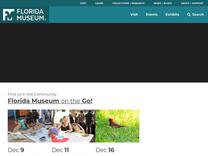Pollination ecology and conservation – Daniels Lab https://www.floridamuseum.ufl.edu/daniels-lab/pollinator-ecology/
Research in the Daniels Lab focuses on areas of managed green space in urban and suburban environments that are often overlooked in the context of conservation efforts, including roadsides, residential yards, and utility rights of way. In recent years, both wild and domesticated insect pollinators h
In recent years, both wild and domesticated insect pollinators have suffered major

